Rules - MDM
Rules in Oxari's mobile management enable automation of actions based on the fulfillment of certain conditions. It is possible to assign an action to a specific event or condition, as well as to combine rules into cause-and-effect chains, so that one rule can initiate another. This makes it possible to create advanced procedures for managing mobile devices in an organization. Rules use actions that are set in the Mobile Management > Actions section.
It is crucial to design rules that are simple and thoughtful, with unambiguous names indicating their function or application. It is also important to describe each rule in detail to make it easy to understand its purpose and operation, which provides transparency and efficiency in management and makes the IT team's work easier.
New rule
To add a new rule, go to the section in question and then click the “New Rule” button.

Filling in the rule
Next, in the “New rule definition” window, fill in the desired fields and click the “Save” button.
| 1 | Rule activation - Checking the “Active” option activates the rule. |
| 2 | Name - Used to identify the rule. |
| 3 | Description - Allows you to understand the purpose of the rule. |
| 4 | Trigger event - Select the event that will trigger the rule, currently only the “Registration of new mobile agent” event is available. (It is possible to create a rule without a trigger event, for example, cyclic sending of SMS messages, using Schedule) |
| 5 | Schedule(tasks) - Specify when the rule is to be active (Optional). More about schedules: Go > |
| 6 | Position - Determine the order in which the rules are executed, if there are more rules. |
| 7 | Starting rule - Optional setting of the rule to be the trigger for the current rule. |

Specifying the action/condition of the rule
After creating a rule, the user will be taken to the rule creation window. Rules in Oxari work on an “if-then” basis, where certain conditions (if) trigger certain actions (this). In this case, the triggering event is “Registration of new mobile agent.” To assign an action or condition to the event, click on the tile in question.
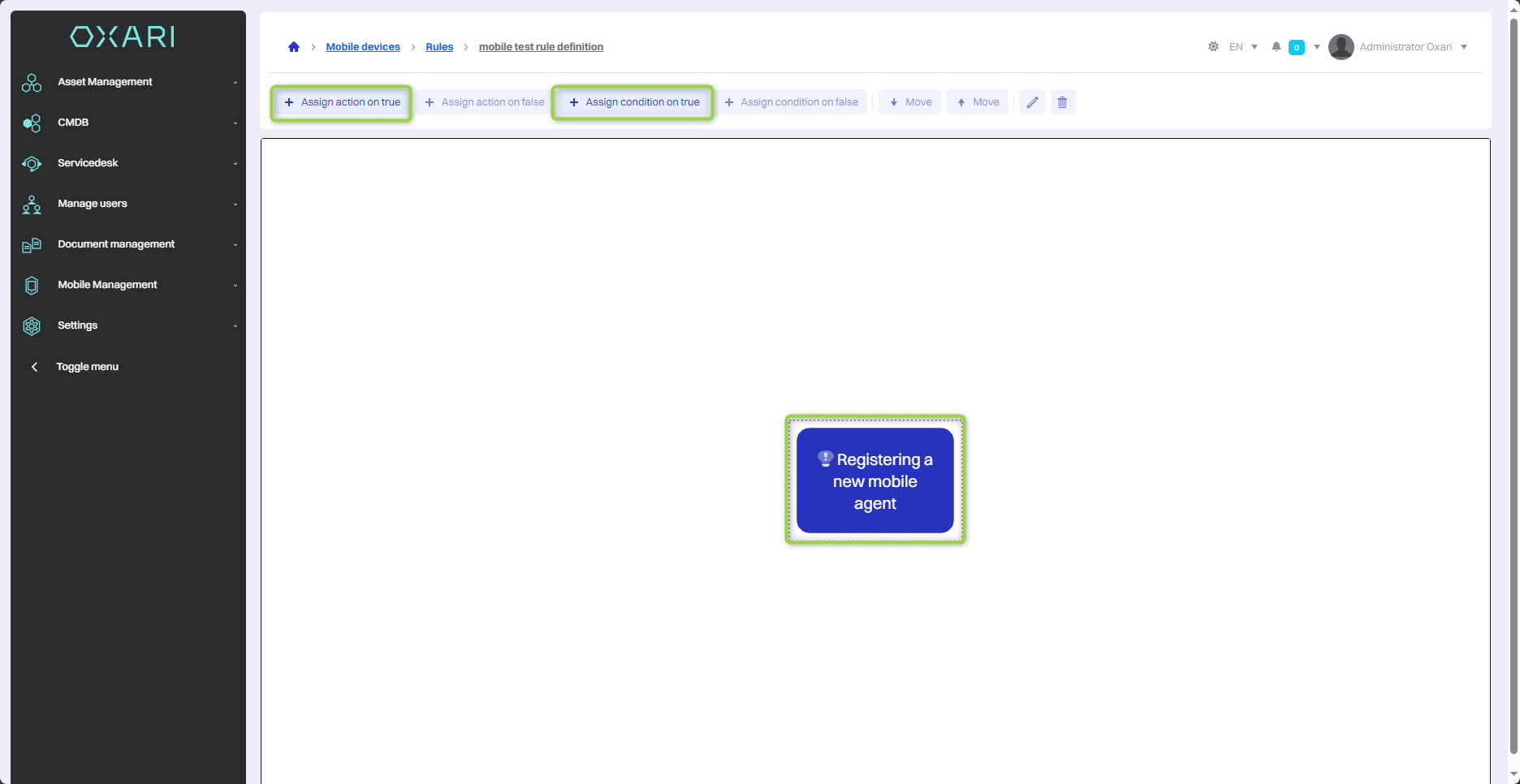
Assigning a condition
After clicking on the tile, two options will be available to use “Assign action for TRUE” and “Assign condition for TRUE.” In this example, a condition will be added first. Assuming in the example that a certain action is required only for phones named “Samsung”. Click the “Assign condition for TRUE” button.
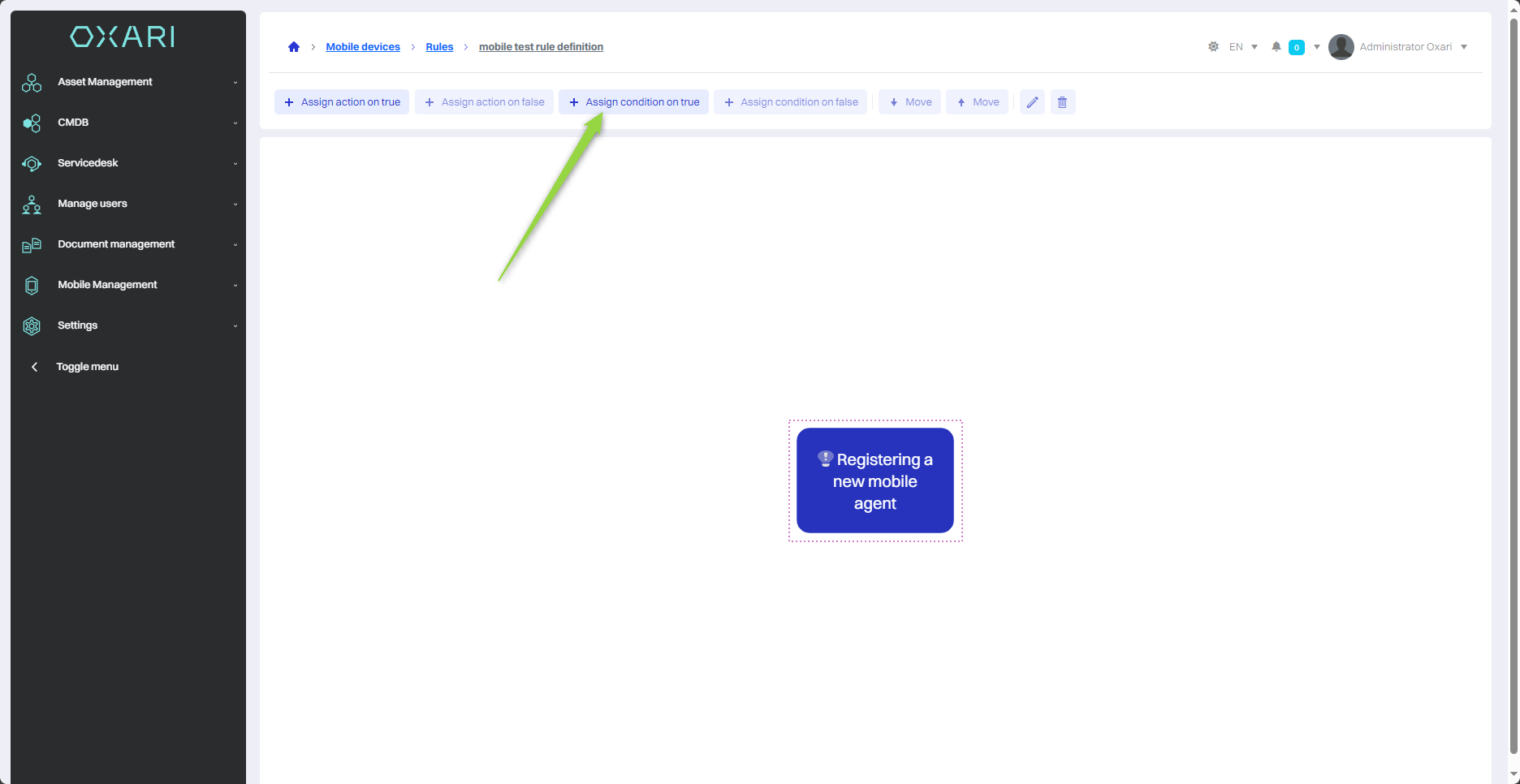
Then, in the “Select condition type” window, the user has a choice of specifying conditions for the newly created rule. In the “New” field, you can select the criterion by which the rule will be applied, for example:
Device model - Allows you to apply the rule to devices with a specific model. |
Device name - Allows you to apply a rule based on specific device names. |
IMEI number of the device - Daje possibility of determining the rule for equipment with a specific number IMEI. |
In this case, the “name of the device” is selected, and then click “save”.
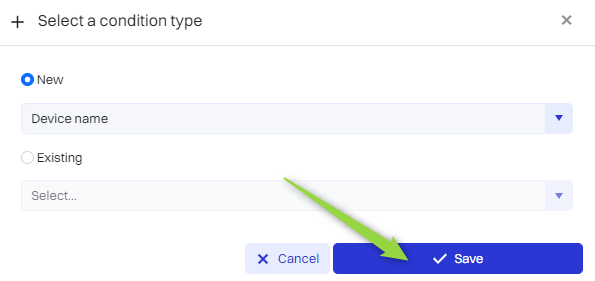
Then in the “New condition” window you will find:
| 1 | Field for entering the name of the new condition. |
| 2 | A drop-down menu with a “contains” option so that the condition can be determined based on the text content in the name. |
| 3 | The field for entering the condition (Name includes Samsung) which means that the condition will work if the device name has “Samsung” in it. |
You should, fill in the fields, and then click the “Save” button.

A given condition has been created and both actions and subsequent conditions can be assigned to it in the Oxari system. These actions and conditions are designated to be executed when the original condition is met (TRUE), as well as to be executed when the condition is not met (FALSE).
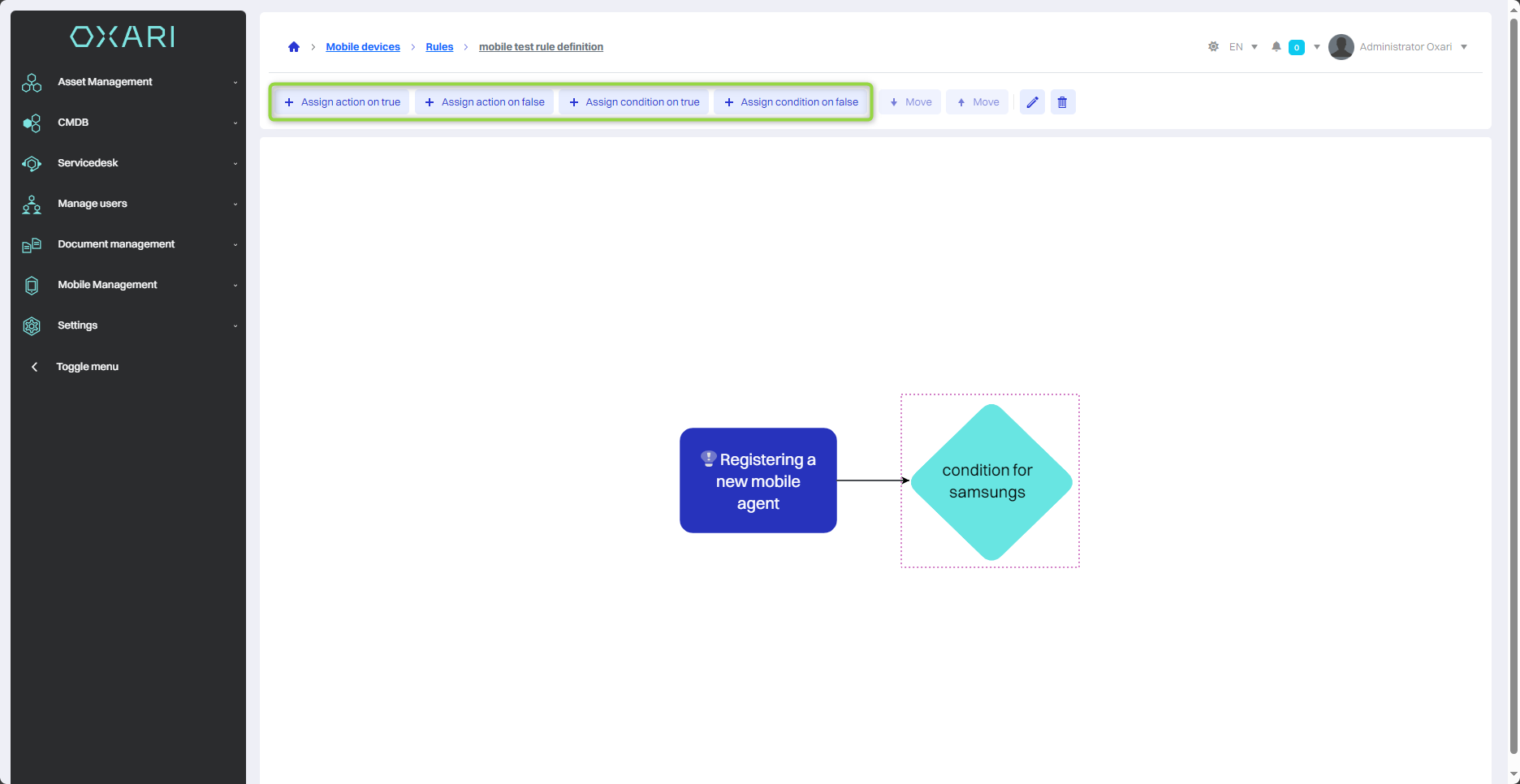
Assigning an action
In the example in question, when the condition for phones named “Samsung” is met, to assign an action to it, click on the “Condition for Samsung phones” tile and then select “Assign action for TRUE”.
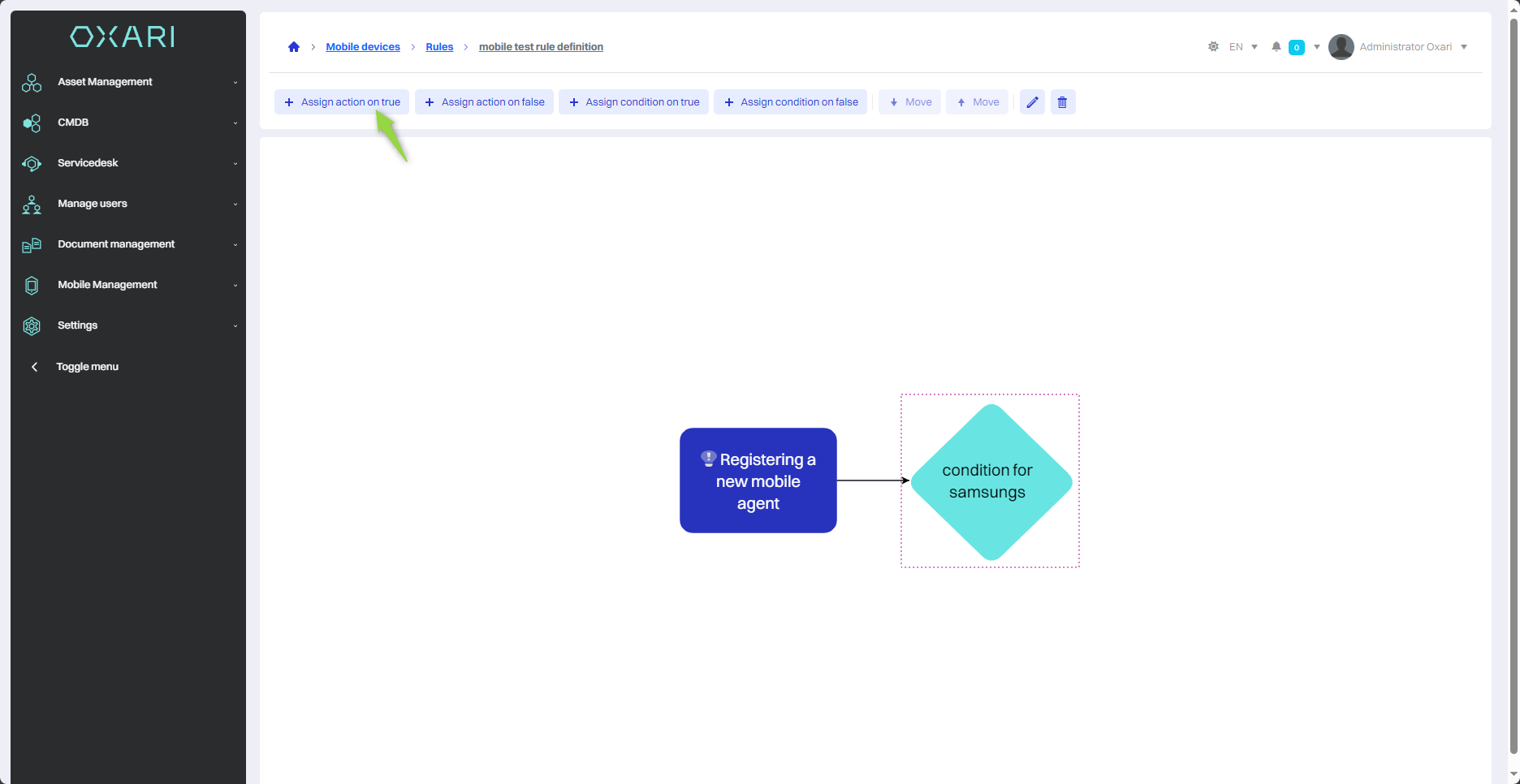
In the process of defining rules in the Oxari system, the user, after creating a condition, can proceed to assign an action. There are two options available:
| 1 | “New” - Allows you to create a new action that will be executed when the condition is met. |
| 2 | “Search” - Allows you to select actions that have already been defined in the Mobile Management > Actions section. For more on actions: Go > |
In the example under discussion, a new action is created. To create a new action, the user should select the “New” option and proceed to the process of configuring this action.
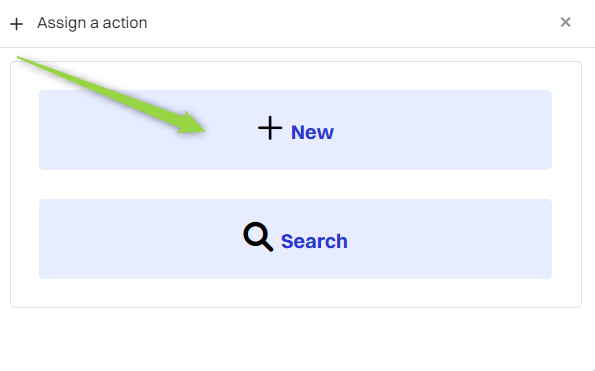
Then, in the “Select Action” window, there are action types to choose from, such as:
| 1 | Remote cleanup - Deletes all data from the device. |
| 2 | Screenshot - Creates a screenshot of the device. |
| 3 | Download logs - Downloads system or application logs from the device. |
| 4 | Send notification - Sends a notification to the device. |
| 5 | Scan files - Launches a scan of files on the device for specific criteria. |
| 6 | Backup SMS, contacts, call log - Creates a backup of selected data from the device. |
| 7 | Restore backup - Restores data from a previously created backup. |
| 8 | Assign policy - Applies a specific management policy on the device. More information about policies and policy making: Go > |
| 9 | Assign profile - Applies the specified configuration profile to the device. Learn more about profiles and how to create them: Go > |
| 10 | Install application - Initiates the installation of a specific application on the device. |
In the example in question, the “Assign Policy” action is assigned, click on the field, and then click the “Select” button.
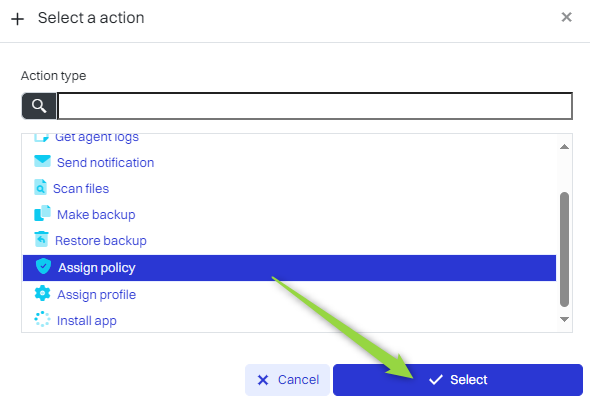
Next, in the “Assign Policy” window, name the action and select the desired policy that was previously created, and then click the “Save” button.
To create a policy: Go >
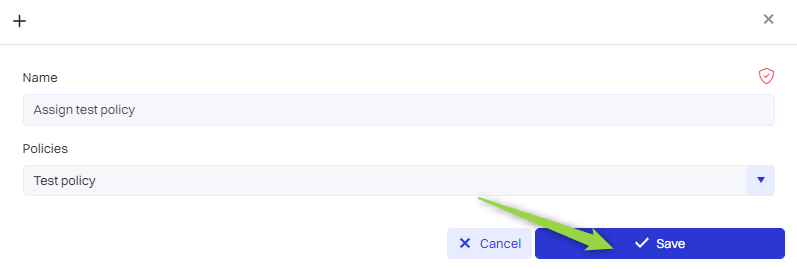
The given action has been added to the rule. It may happen that it is not immediately visible, in which case you need to refresh the page.
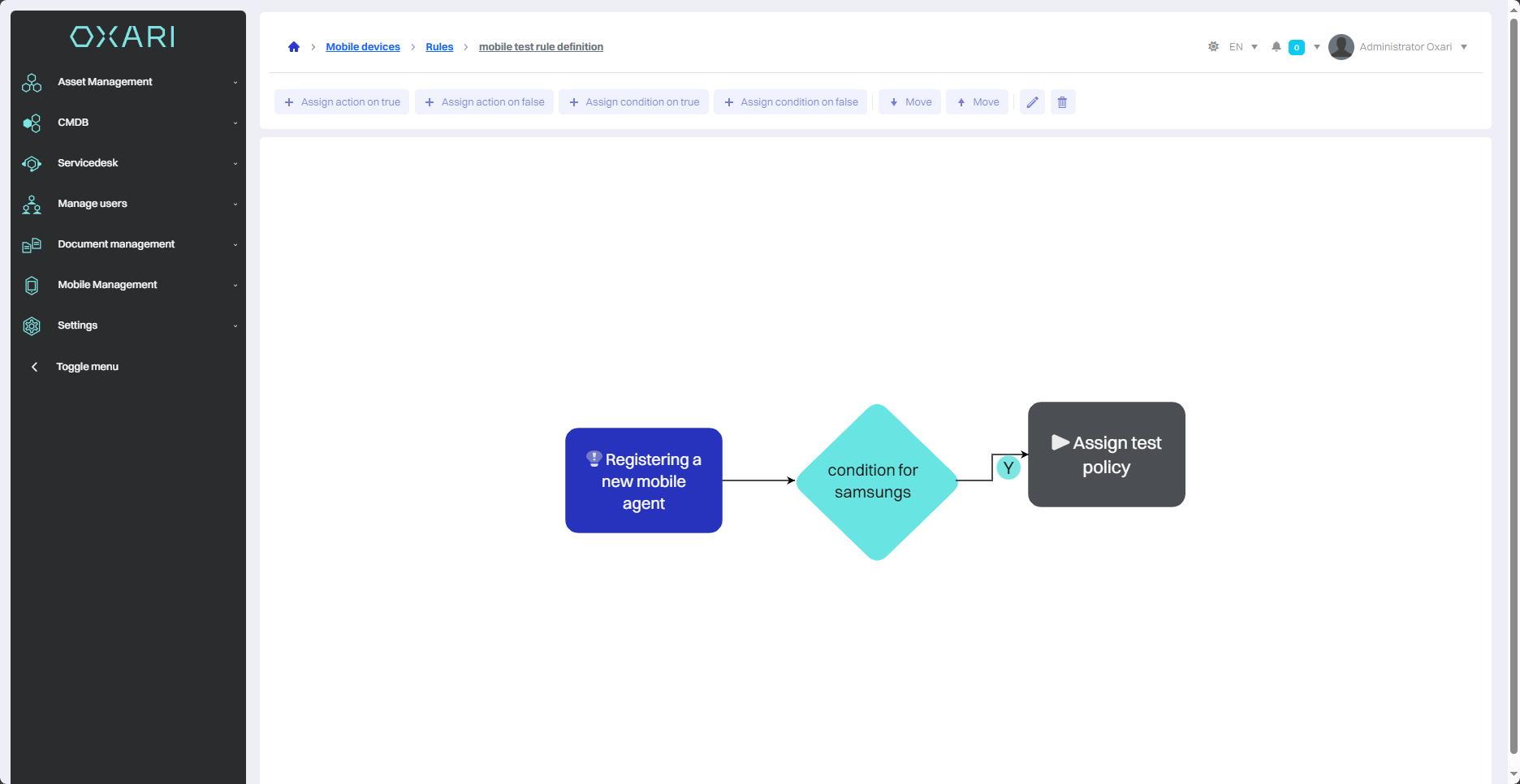
Once a new action is created in the Oxari mobile management system, it becomes available under Mobile Management > Actions and can be reused in various rules. To use already exist shares, in the window “Przypisz akcję” just select “Wyszukaj”, find a list and approve the list, klikając “save”. This allows you to effectively use the action in different scenarios without having to create it again.
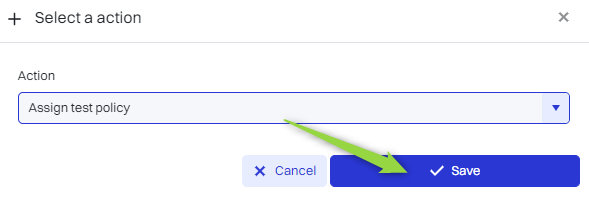
Editing/deleting actions and conditions
To edit or delete actions and conditions, simply go to Mobile Management > Rules. Then, to see more options for a rule, click the “Details” button next to the selected rule.
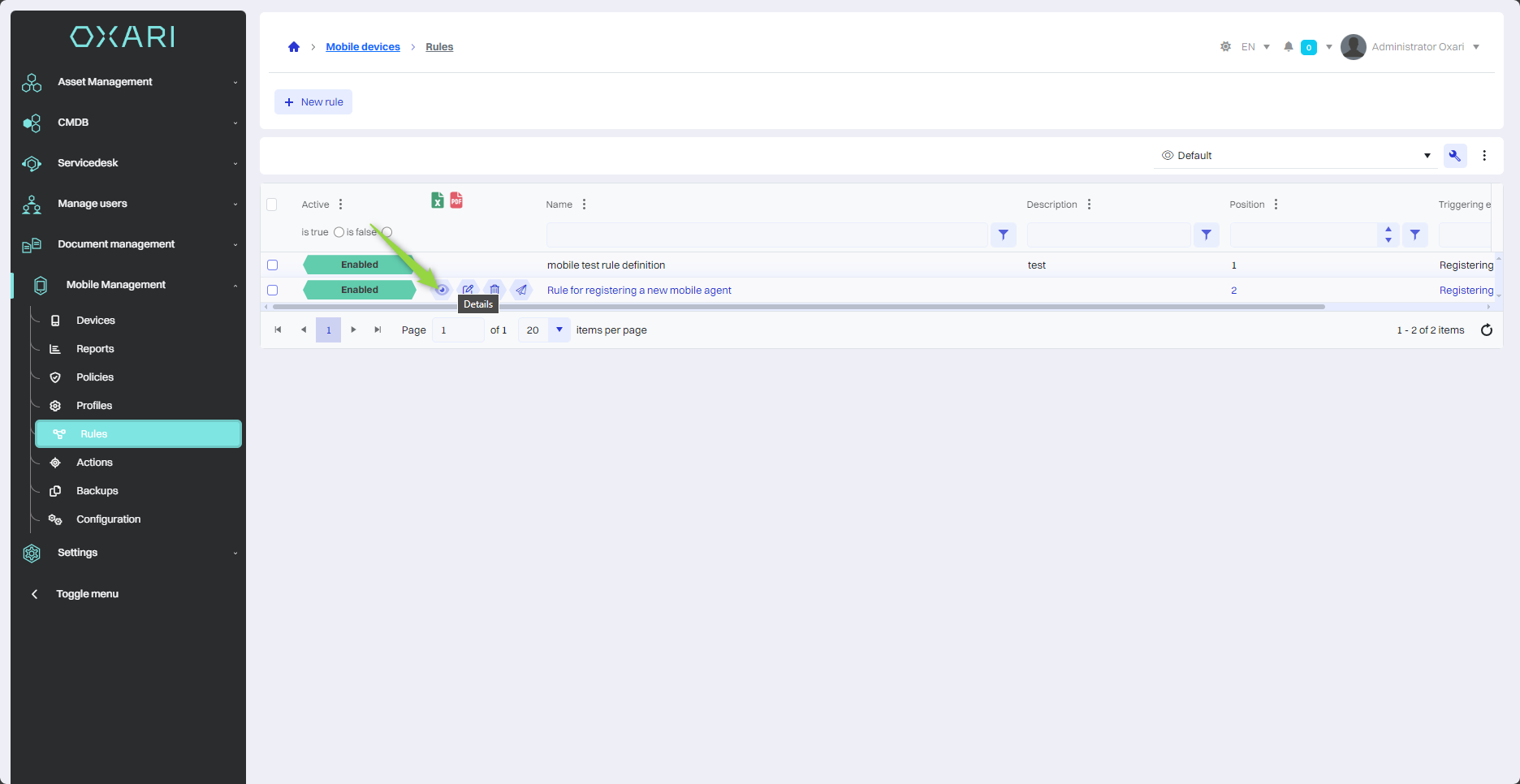
In the rule details, select the desired action/condition by clicking on the tile of the corresponding action/condition. The edit/delete options will be visible in the upper right corner.
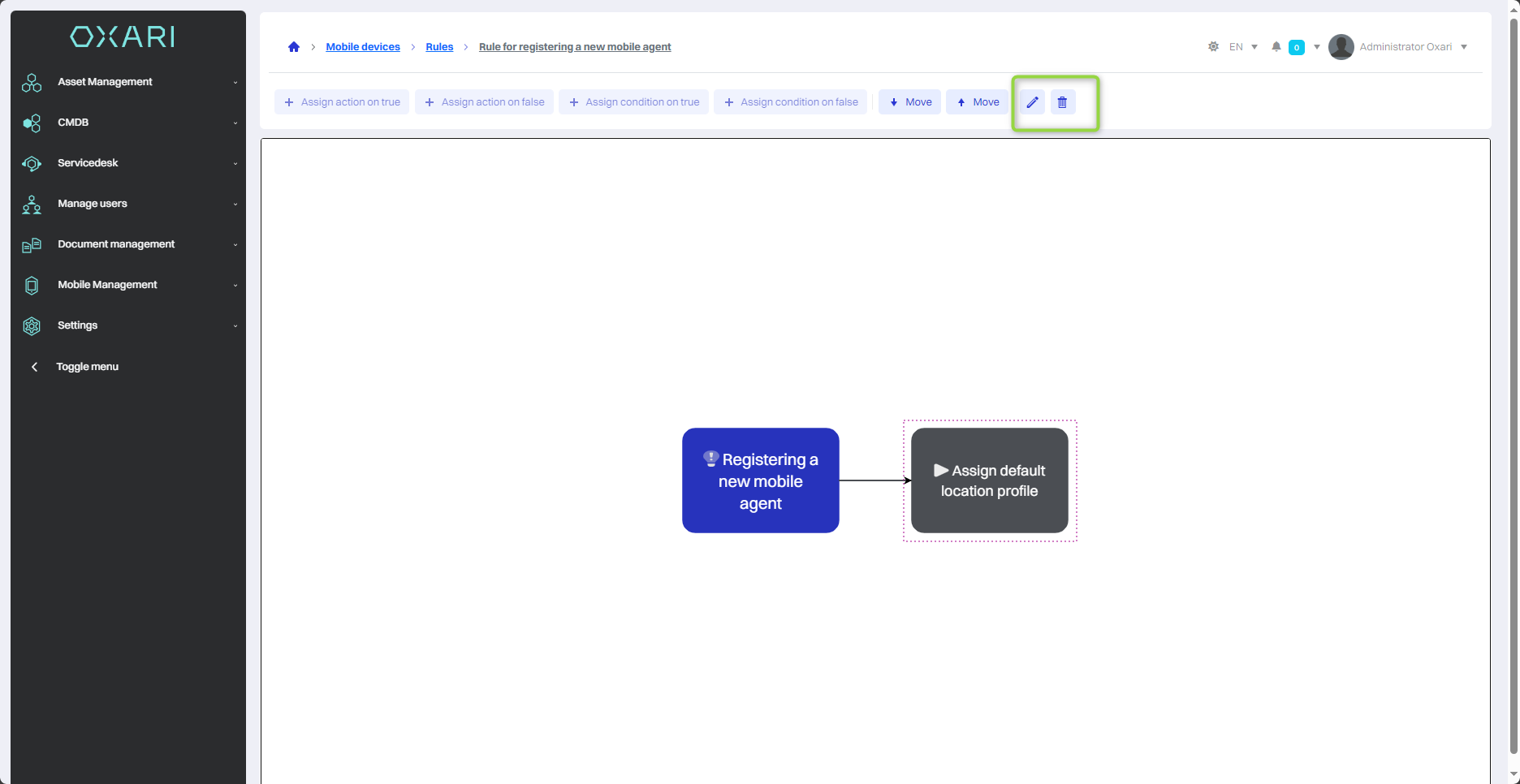
Editing/Deleting a rule
To edit or delete rules, go to Mobile Management > Rules. Hover over the desired rule. The edit/delete buttons will appear.
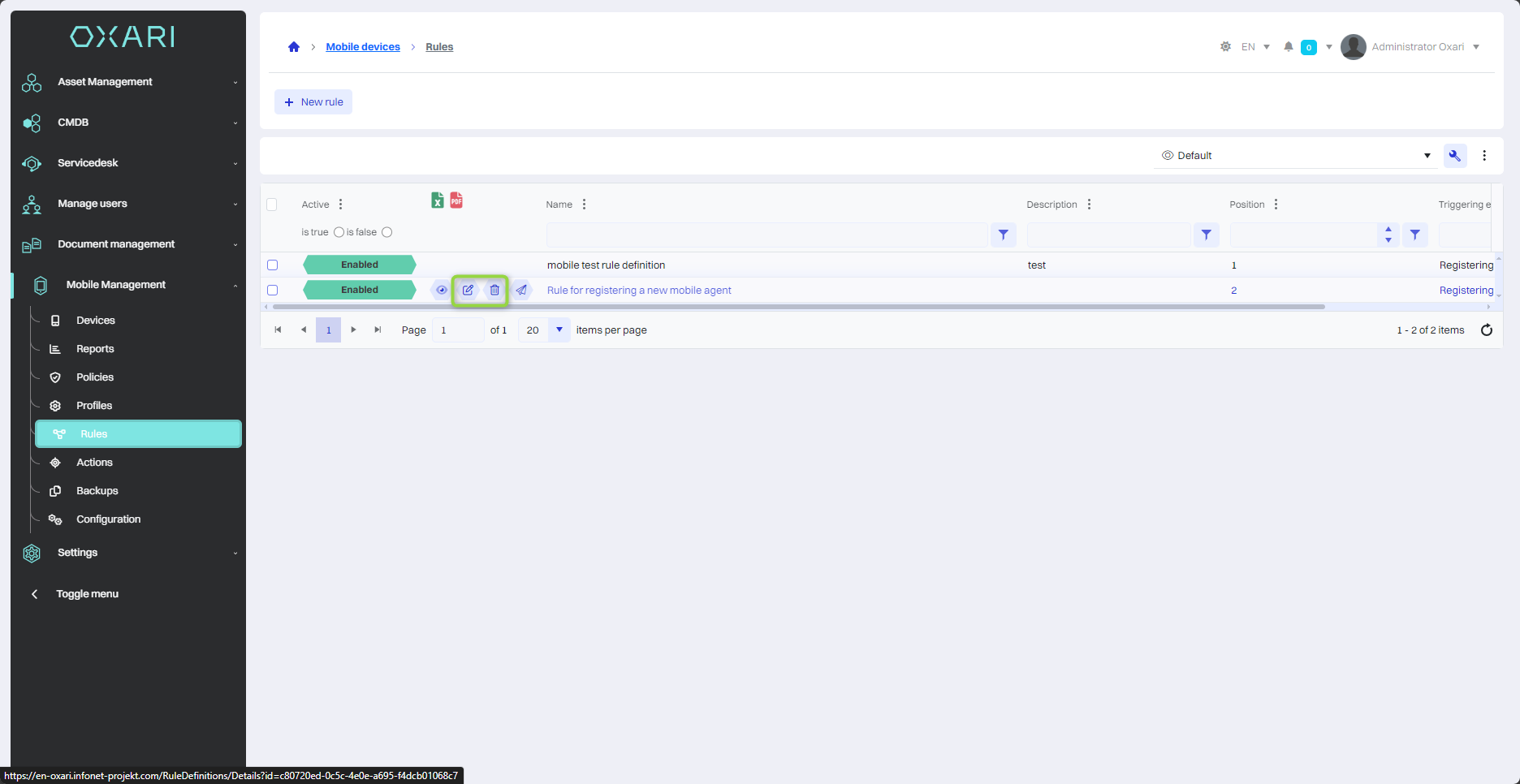
Activating/Deactivating a rule
Each rule can be activated or deactivated. To activate/deactivate a rule, go to Mobile Management > Rules. Hover over the desired rule and click the edit button.

Then, in the edit window, click on the “Active” checkbox (a checked box means that the rule will be Active), finally click the “Save” button.

Testing a rule
To test rules, go to Mobile Management > Rules. Hover over the desired rule. A button to perform the test is displayed.
Only rules with an assigned schedule can be tested.
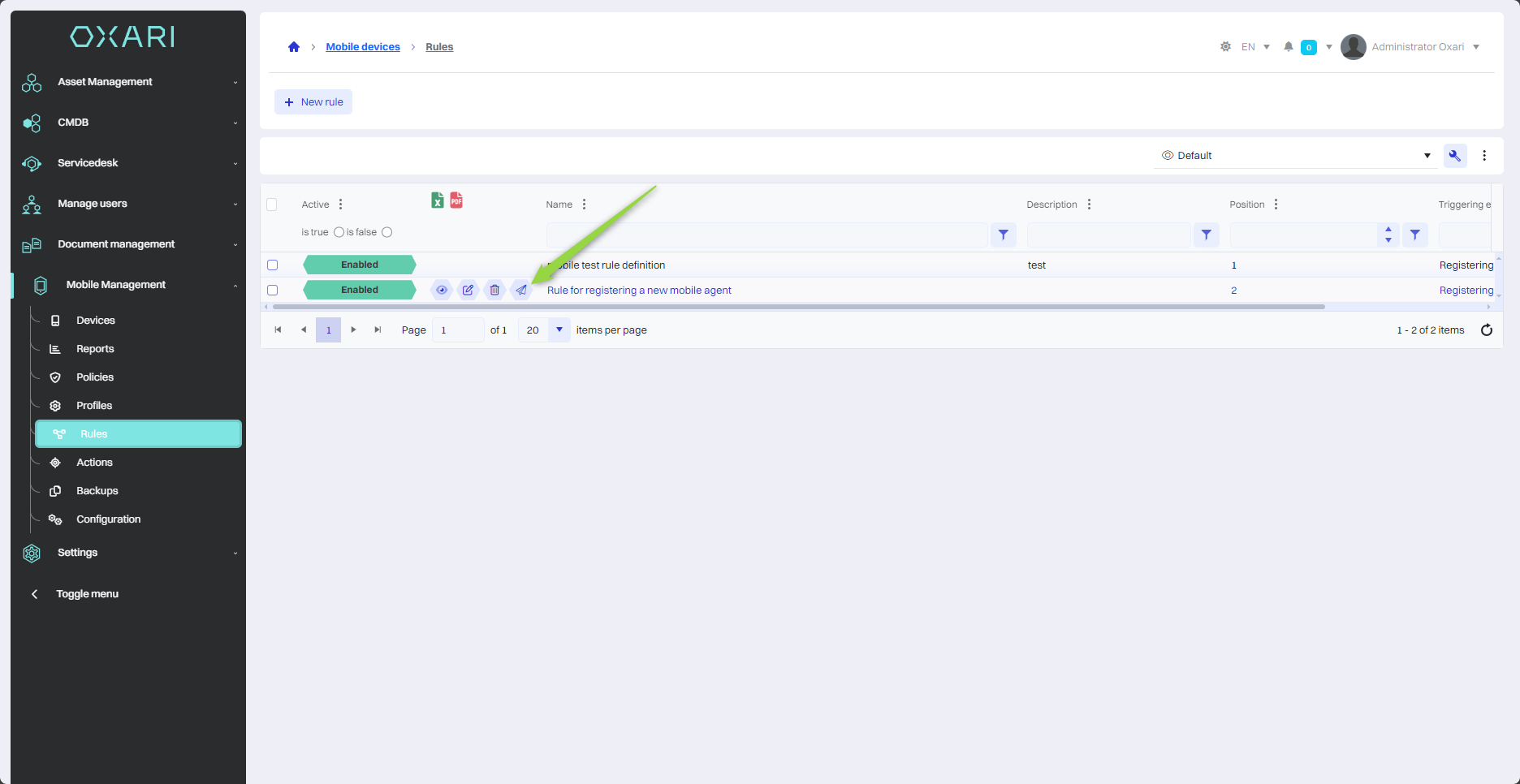
Example of a rule that sends cyclic SMS messages
In the described example, a rule will be implemented, which is programmed to send SMS messages to all registered mobile devices. This operation will be carried out automatically on every first Monday of the month.
Create a task schedule
First, a schedule will be created that can be assigned to a rule. To create a schedule, go to Settings > Definition of task schedules, and then click the “New sentence schedule definition” button.
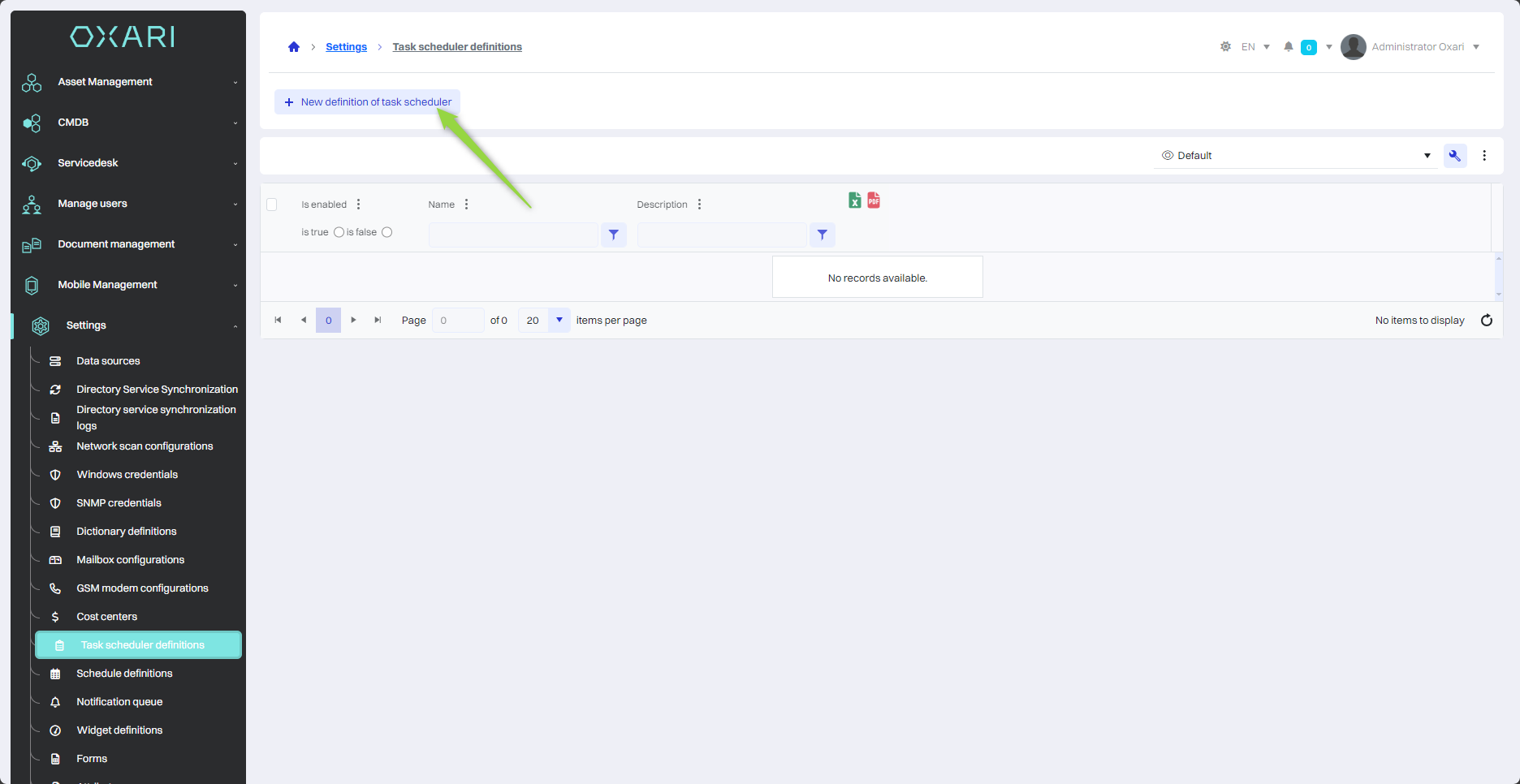
Then, in the “New task schedule definition” window, fill in the fields as follows and click the “Save” button.

The given schedule will appear in the table:

Create a rule
In this step, you need to create a rule. To create a rule, go to Mobile Management > Rules, and then click the “New Rule” button.
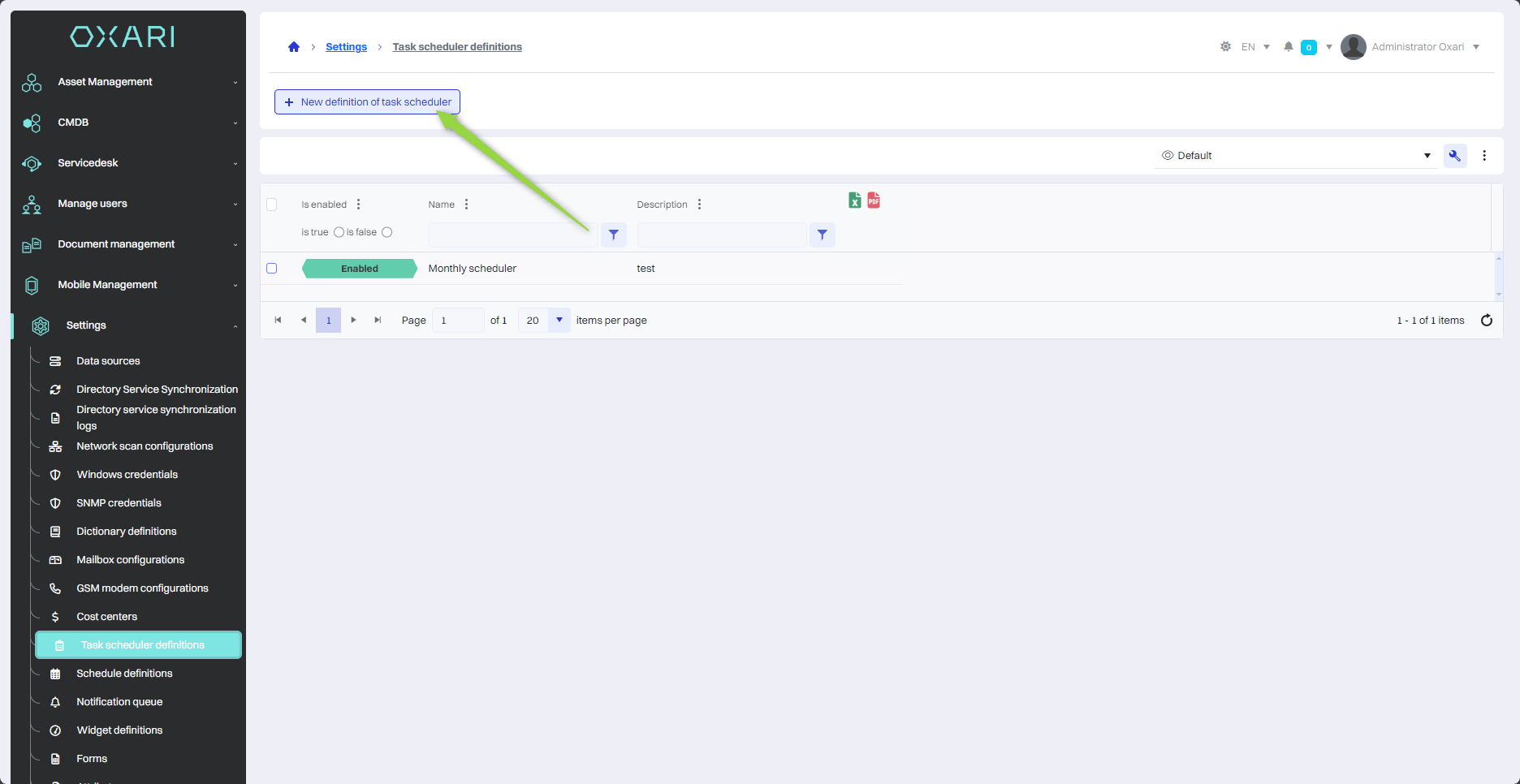
Then, in the “New rule definition” window, fill in the fields accordingly and click the “Save” button.
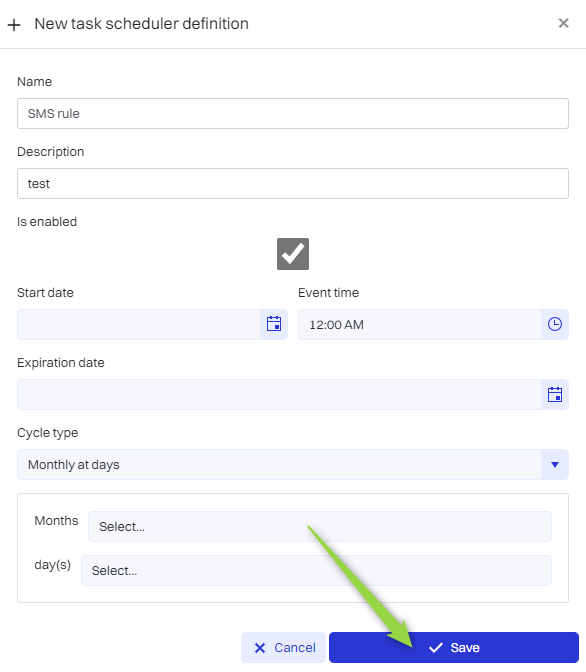
Assign action
Next, you need to assign the “Assign action for TRUE” action. Click on the “Start” tile and click the “Assign action for TRUE” button.
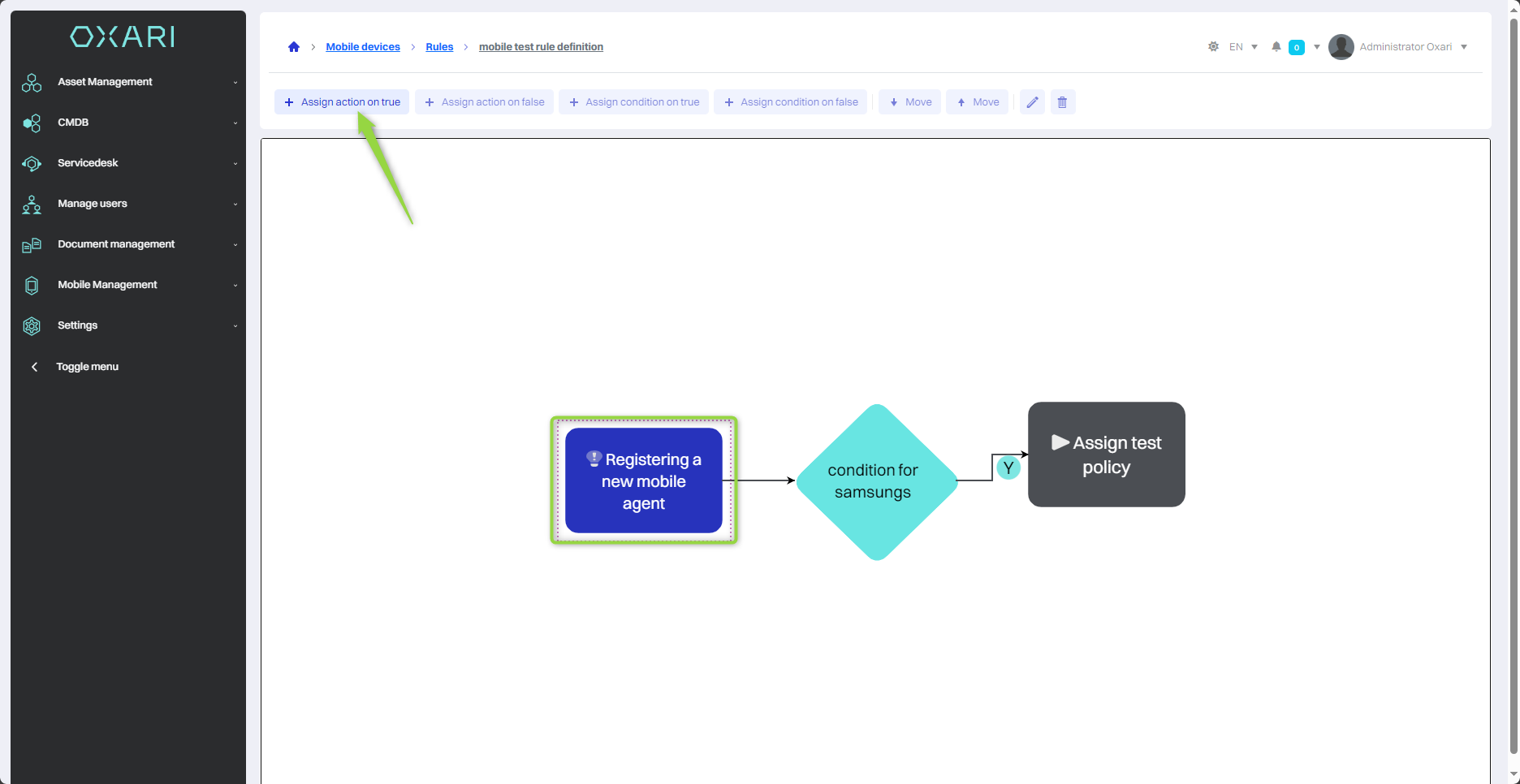
In this step, click the “New” button.

Then select the “Send notification” action and click the “Select” button.
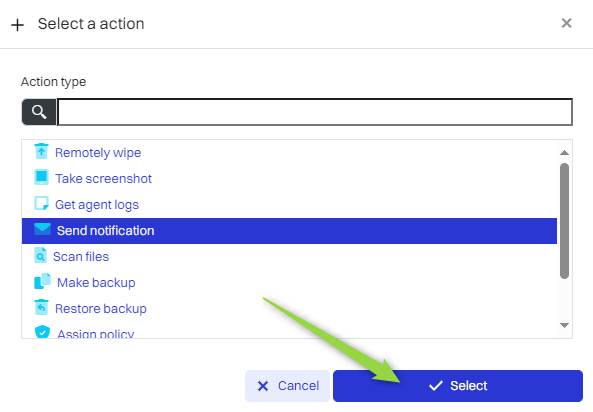
In the “Send notification” field, fill in the fields and click the “Save” button.
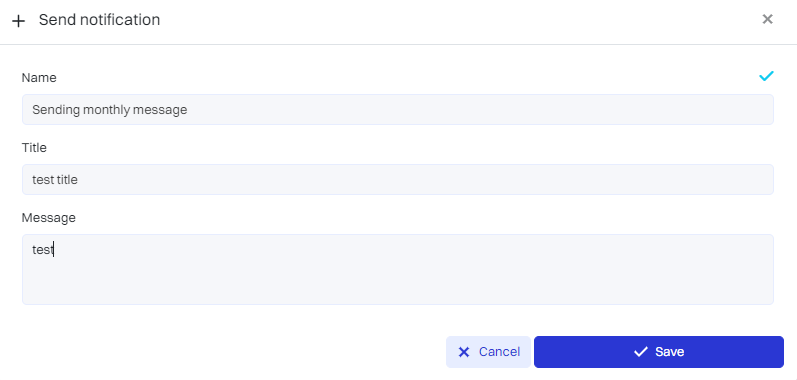
The rule is created

